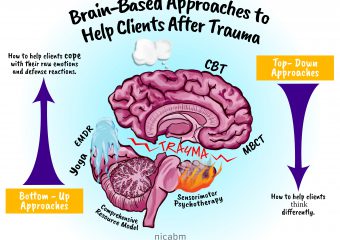As practitioners, we know how crucial it is to create a safe space when working with clients who have experienced trauma.But this can often be challenging . . . and nuanced. That’s because for many trauma patients, sometimes even a friendly face or a gesture of compassion can feel unsafe, even threatening. So what are […]
Three Ways to Resource Clients When Anxiety Is Triggered
When a client struggles with emotional triggers, finding ways to help them disrupt that automatic cycle of reactivity can be difficult.But according to Rick Hanson, PhD, there are three key practices that can help a client regain a sense of safety and calm – especially when anxiety gets triggered. He takes us through them in […]
Could a Smartphone App Help Treat PTSD?
Could people who experience PTSD hold a potential key to relief right in the palm of their hand? I’m talking about a smartphone app that could help reduce symptoms of PTSD. Back in 2011, the U.S. Veterans Affairs National Center for PTSD developed the app, PTSD Coach, to help veterans suffering from posttraumatic symptoms. Since […]
Treating Trauma in 125 Countries
Now that we’ve wrapped up the Treating Trauma Master Series, I’d like to take a moment to thank you again for tuning in. 51,850 practitioners joined us for one or more sessions of the program. We believe the work you do with people who’ve experienced trauma is so important. That’s why we made it our […]
Brain-Based Approaches to Help Clients After Trauma [Infographic]
After trauma, it can seem like the lower brain – the parts responsible for our emotional reactions and our defense system – has been severed from the upper thinking brain. This can leave clients feeling the heat of their emotions, but without insight or cognitive reflection. So when we think about treating trauma, our clinical […]




